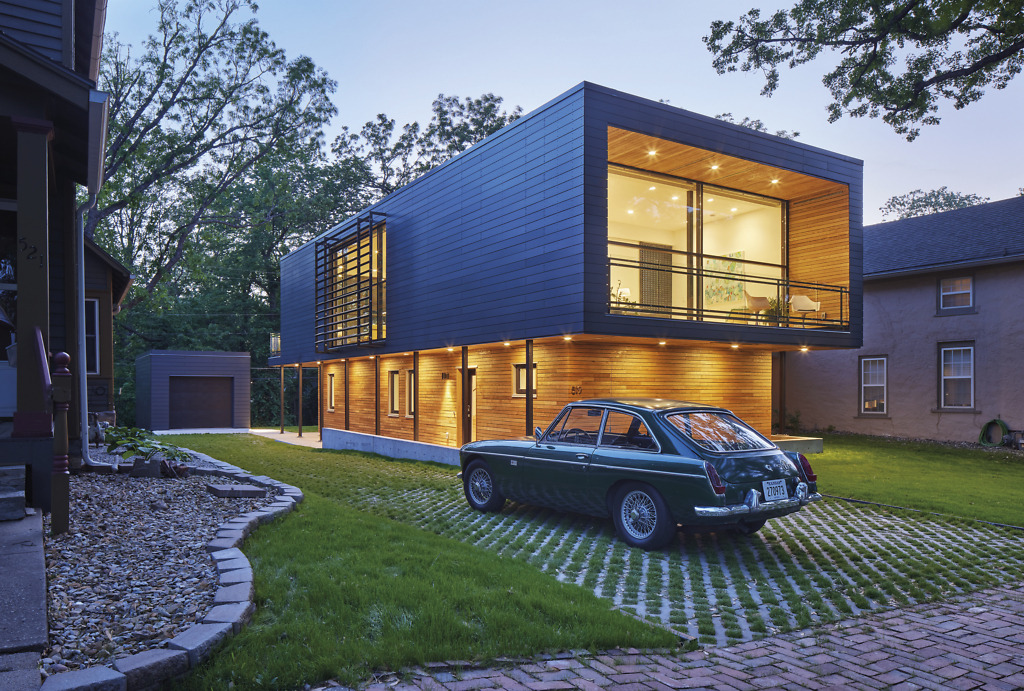
Indiana Street House 2022
The historic Pinckney Neighborhood is a comfortable older neighborhood well-connected to the heart of Lawrence, Kansas. It is a short walk to the Kansas River and its parks as well as the cultural vibrancy of downtown. It is also close to the University of Kansas campus and a nearby bus stop which expands the possibilities of travel to the rest of Lawrence.
The Indiana Street House was designed for and inspired by the site that is in this neighborhood. It is a narrow 50’ infill lot that sits between two houses that are over 100 years old and constructed long before zoning was implemented in the city. The house to the north rests on the property line and the house to the south is within 2 feet of the property line. Due to the narrow space the choice was made to have the main living spaces rise above the landscape to the second floor with more exposure to daylight and expansive views of the neighborhood. The first floor is slimmer in profile to allow for more outdoor space at the ground level. The grade drops 11 feet from front to back and the house is nestled into the slope, so it seems to emerge from the site.
As you enter the first floor of the house, you are welcomed by a foyer that acts as a transition area from the outside to the inside. It is lined with ample storage housed in cabinets crafted in the Studio 804 warehouse by the students using prefabricated carcasses that were reinforced and finished with maple plywood fronts. The foyer extends along the length of the south side of the house with access to two flex rooms a full bathroom and the mechanical room.
The second floor sits on 22 steel columns and opens into the crowns of the trees to the east and west. The master bedroom and its cantilevered deck are on the east side greeting the morning sun and reaching toward a large burr oak tree at the front of the site. The living room and its large deck are on the west end where one can watch the sun set through a skyline of trees at the back of the site.
The overhangs, custom louvers, sunscreens, high performance glazing and well-placed operable units assure the building will not overheat while also taking advantage of the sun’s warmth in the winter and offer cross ventilation to bring in fresh cool air.
The lower floors are smooth ground concrete. The upper-level floors are tongue and groove maple. The bathrooms floors are a 12×24 inch matte black tile and the painted gypsum board walls are highlighted with 4×12 lightly polished arctic white subway tile. A distinctive feature of the interior is the black perforated sliding screens which were fabricated from Richlite by the students in the Studio 804 shop with a CNC machine.
The primary second level siding is Fundermax. A phenolic, high-pressure laminate developed in Austria. It is a by-product of lumber production at sawmills. The decking, walls and soffits are a domestic sassafras. The concrete/grass pavers ensure the project meets the required ratio between permeable to impermeable surfaces and mitigates stormwater runoff.
The project was built to meet the standard for LEED Platinum Certification and is in the process of final certification at this time.
PHOTOGRAPHY
Finish photos: Corey Gaffer, Corey Gaffer Photography, Minneapolis, Minnesota
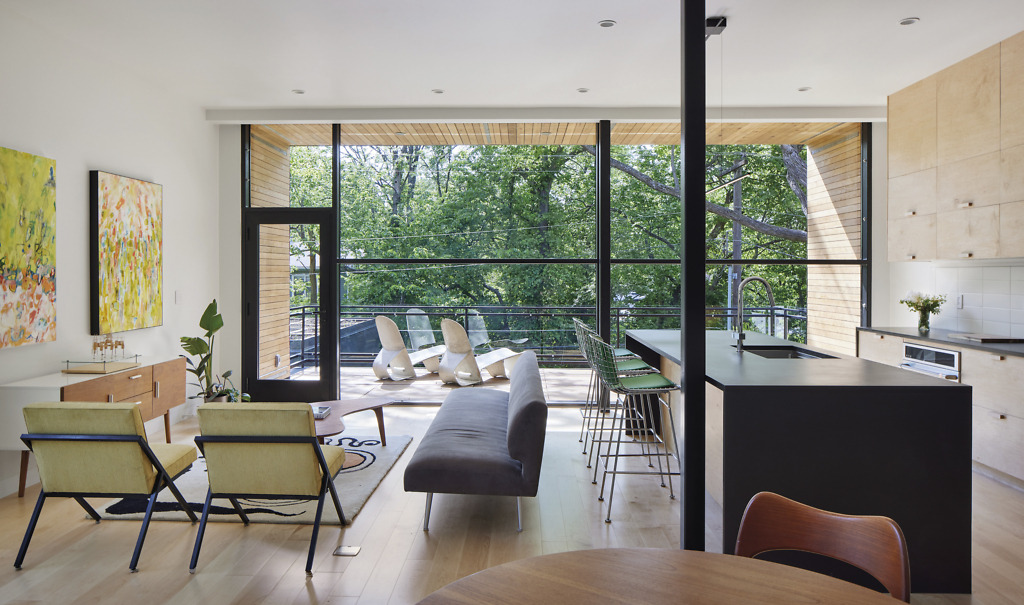
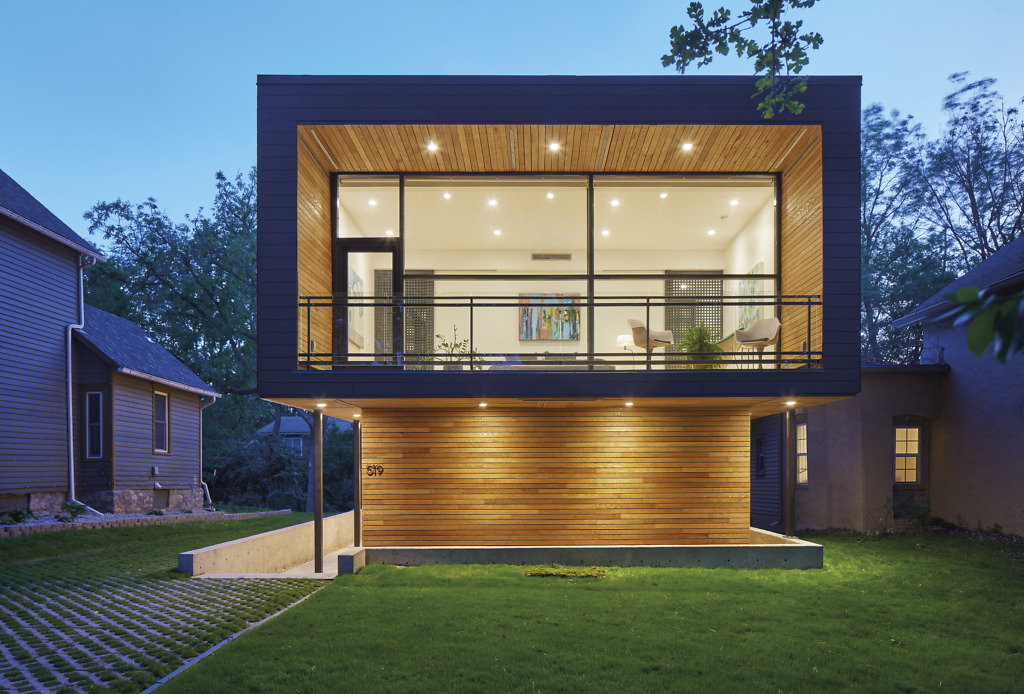
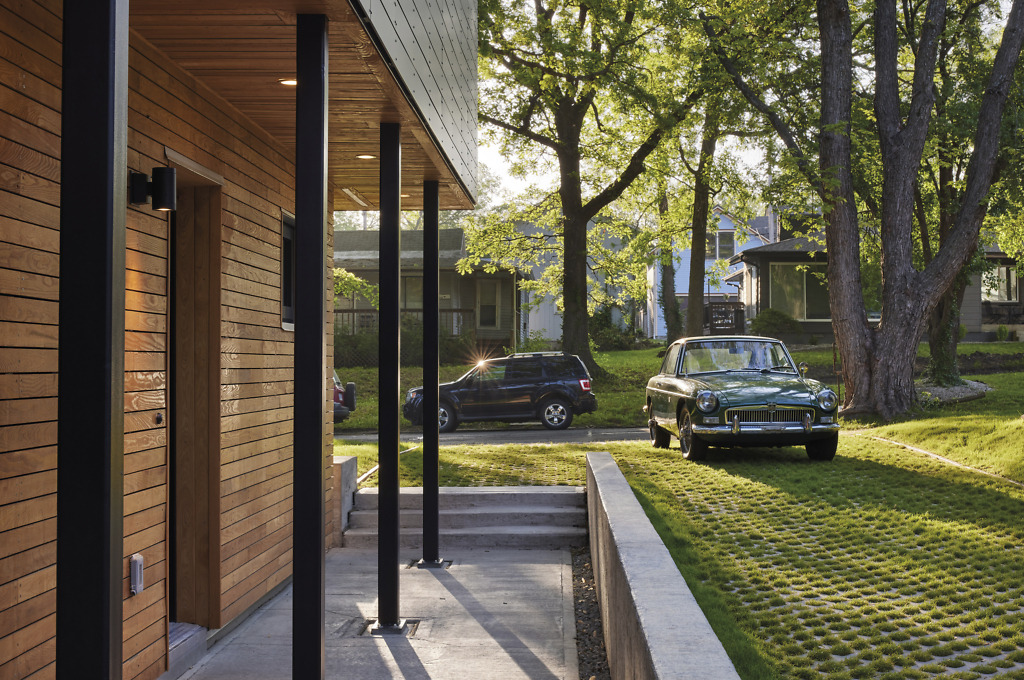
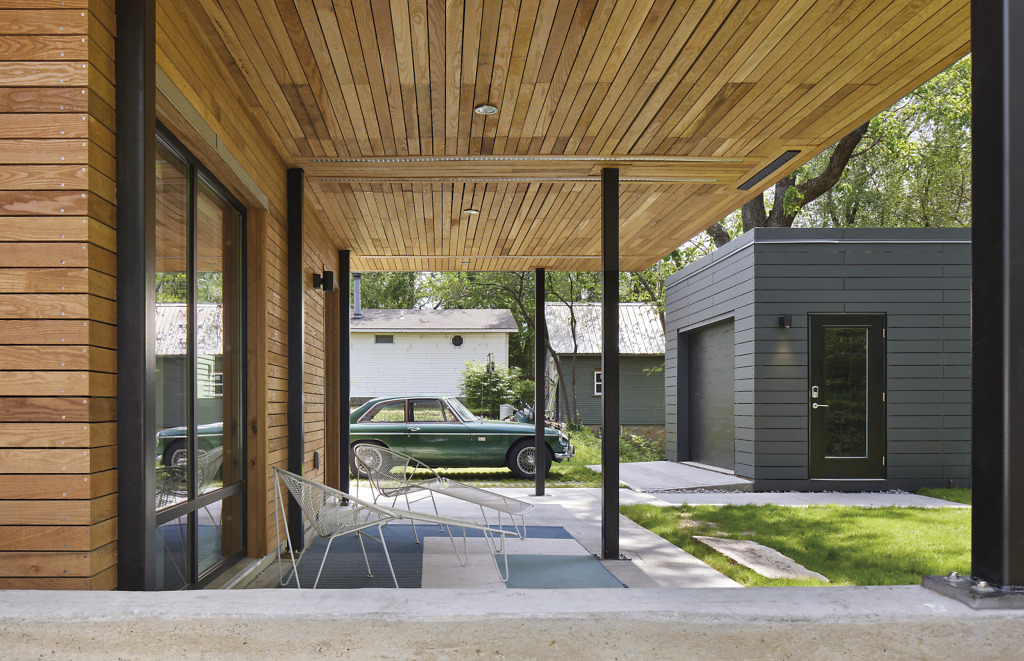
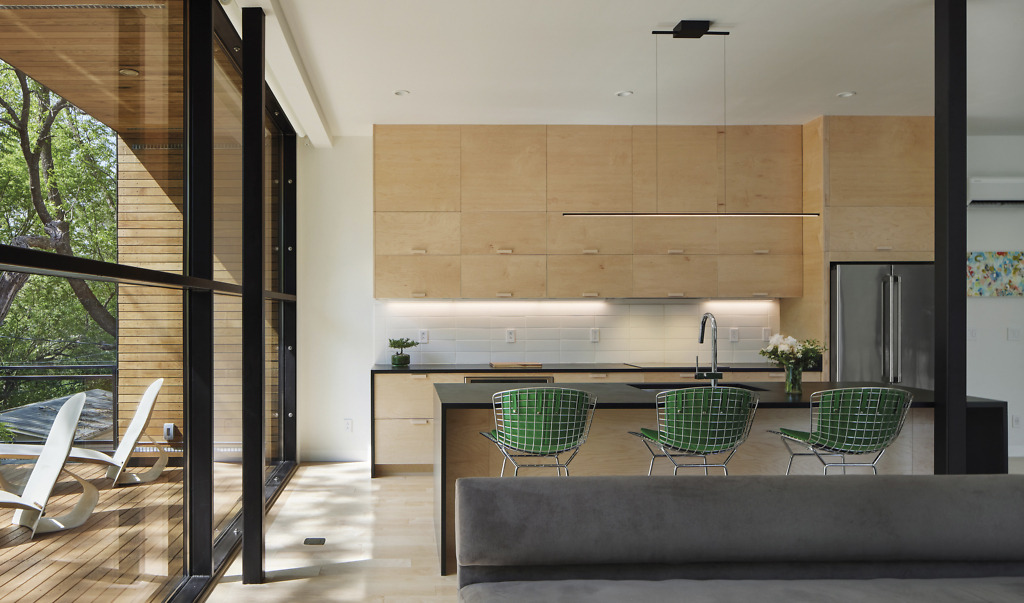
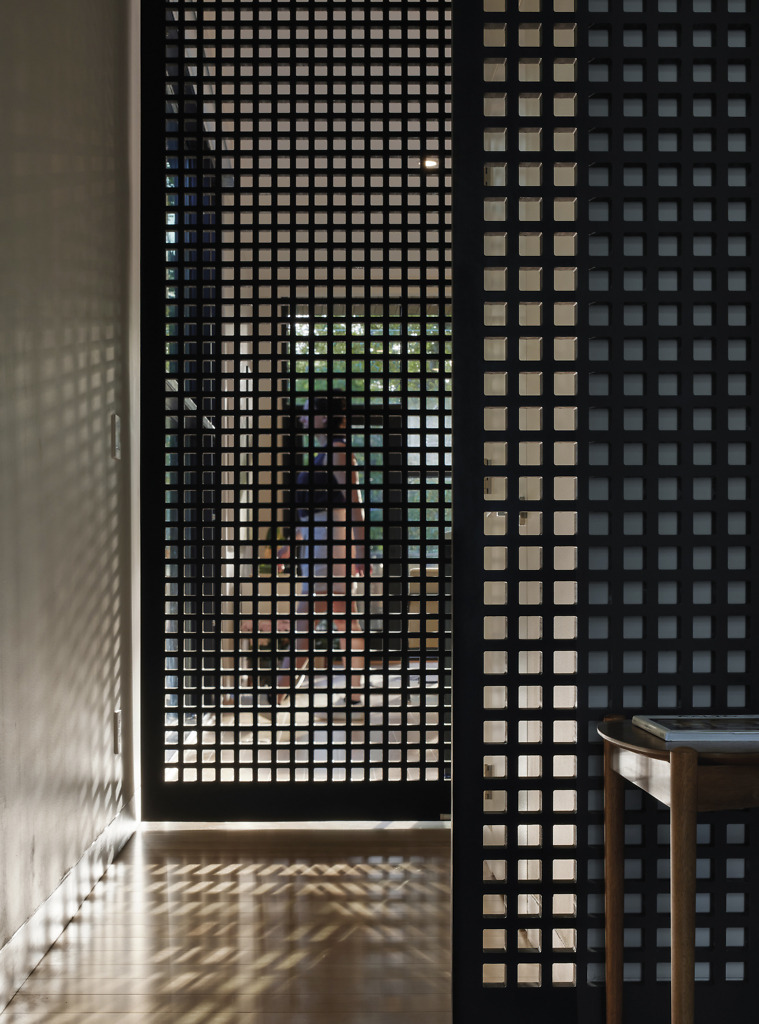
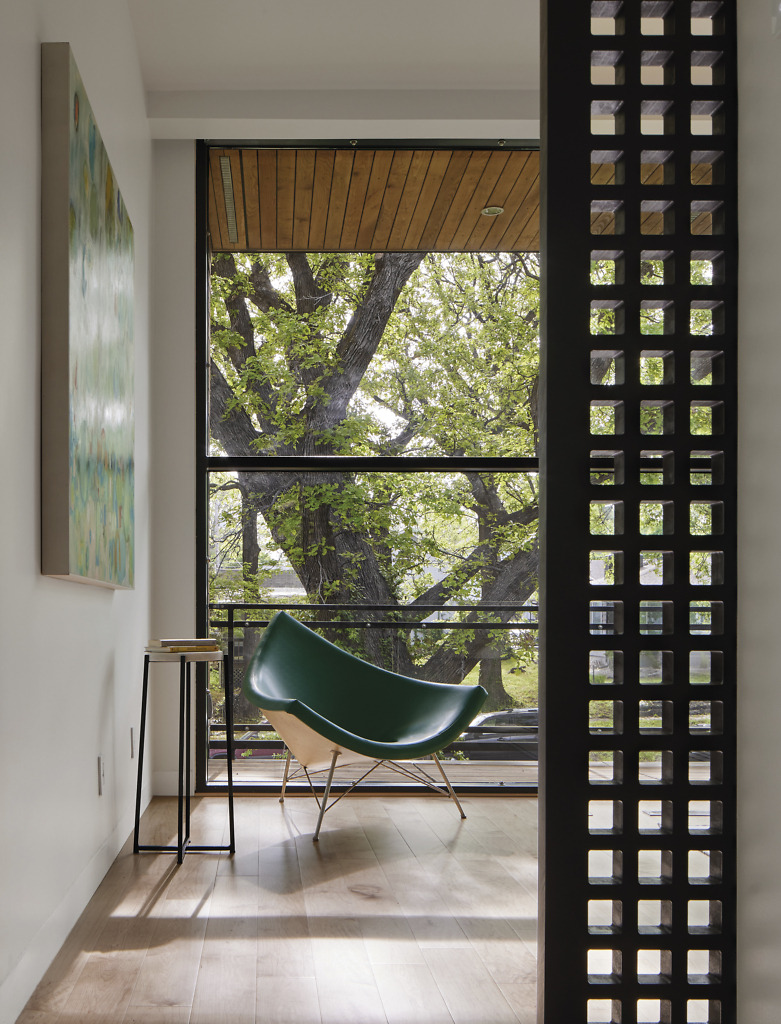
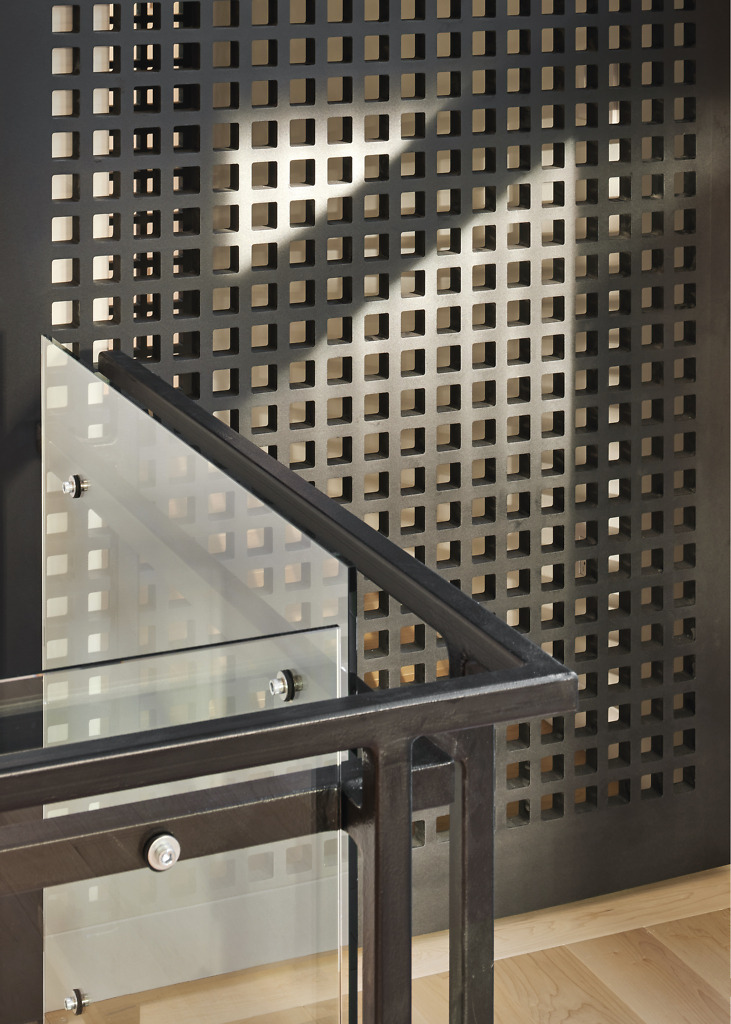
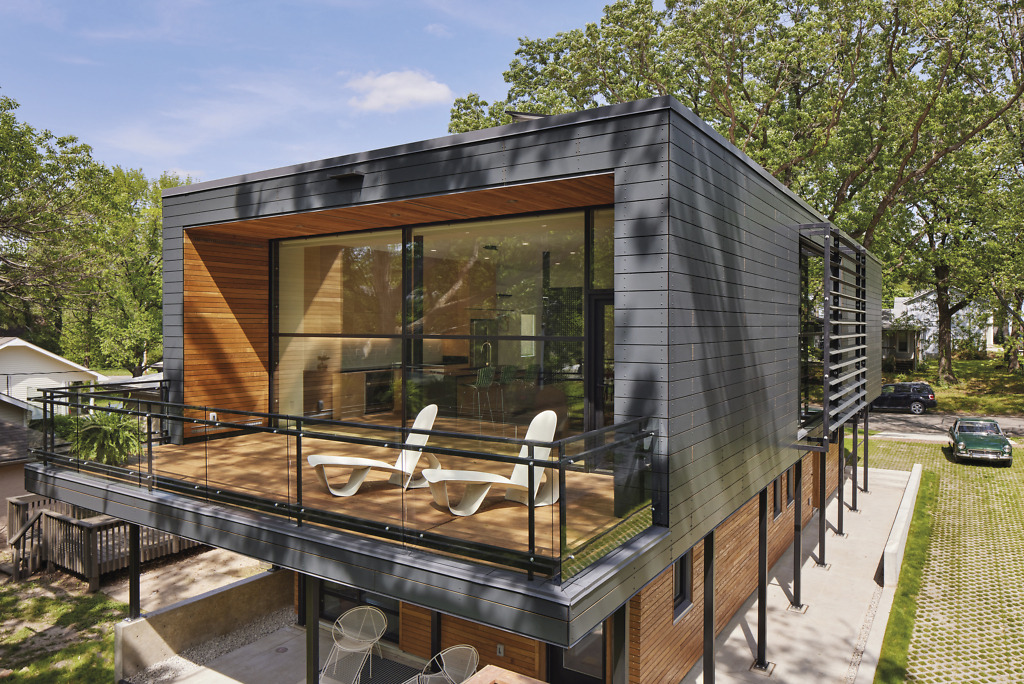
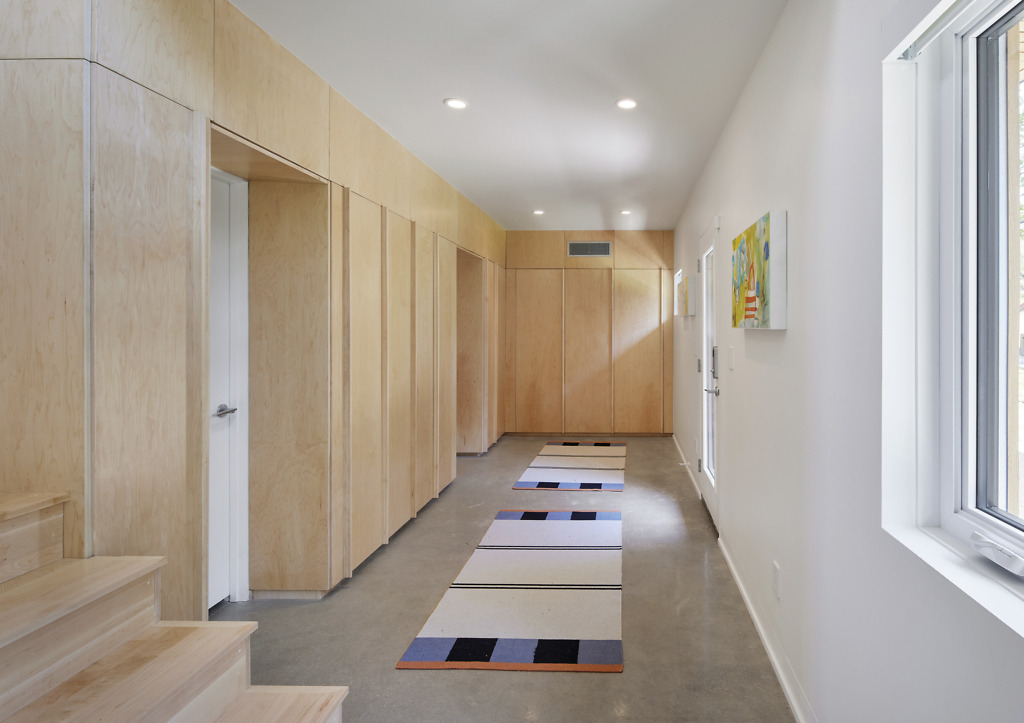
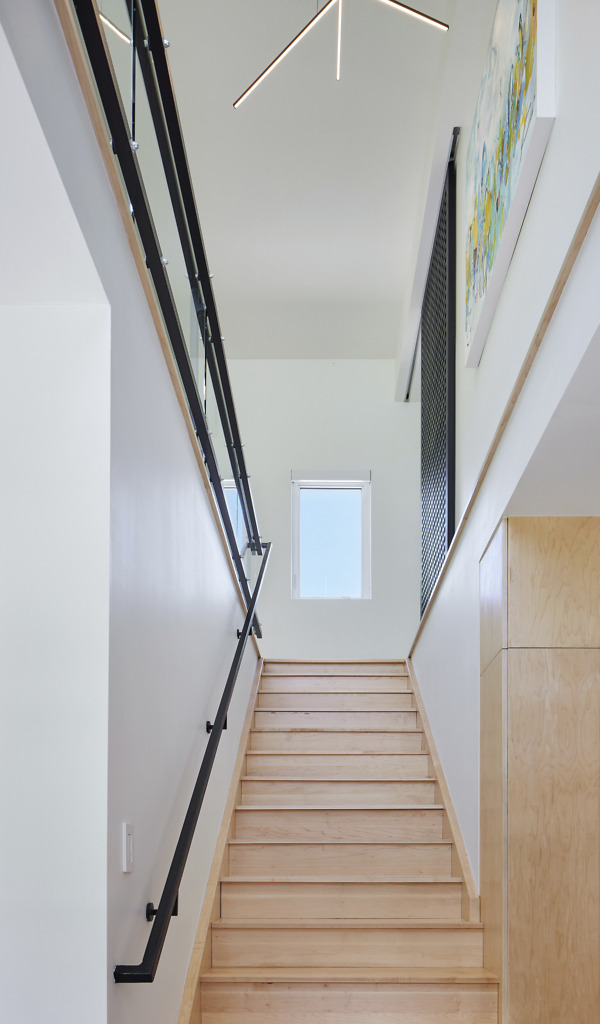
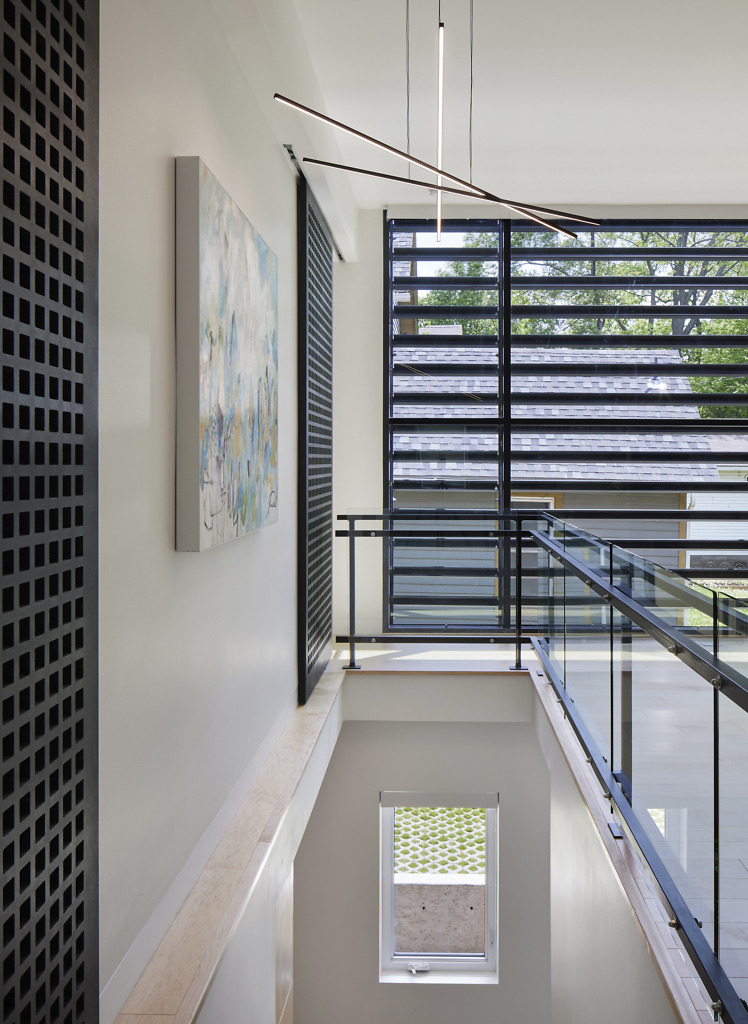
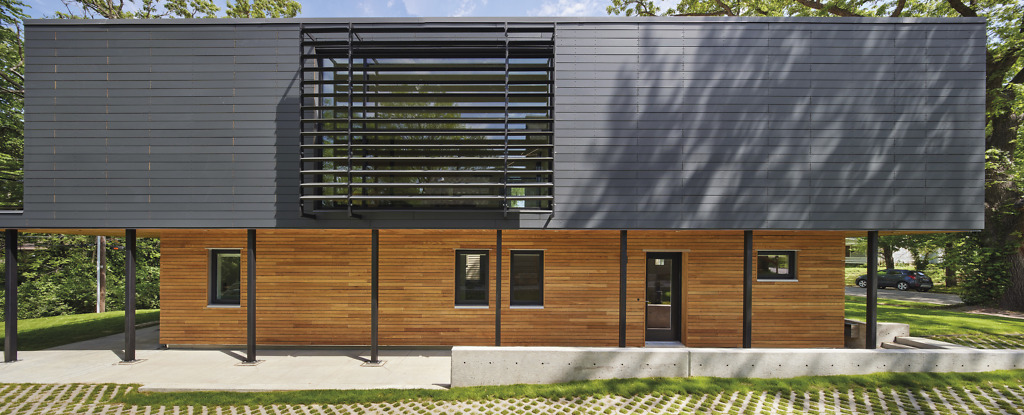

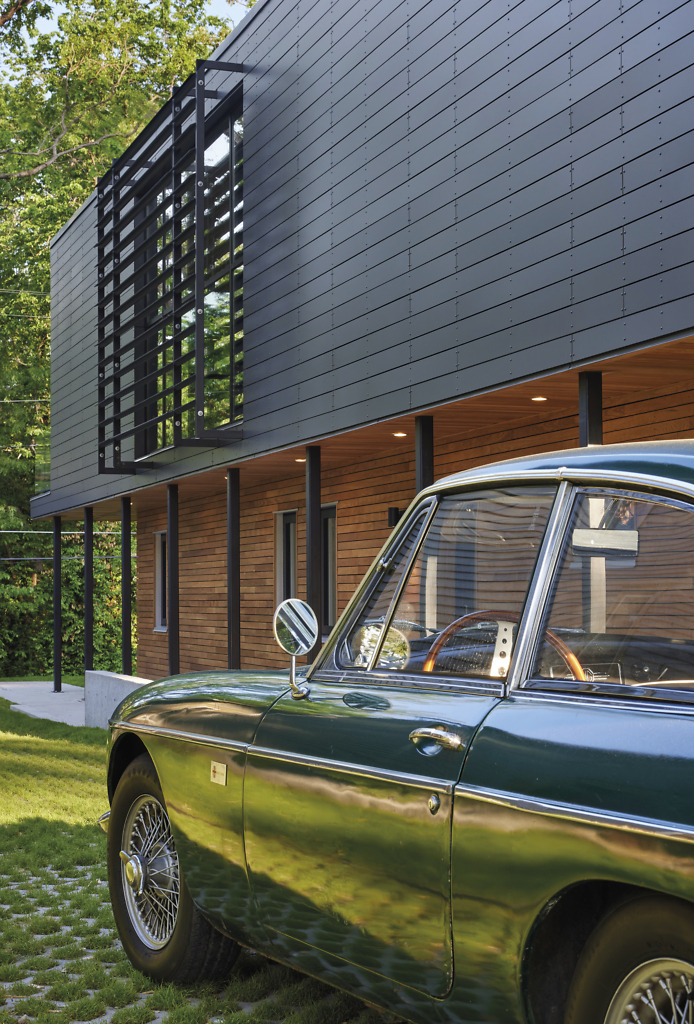
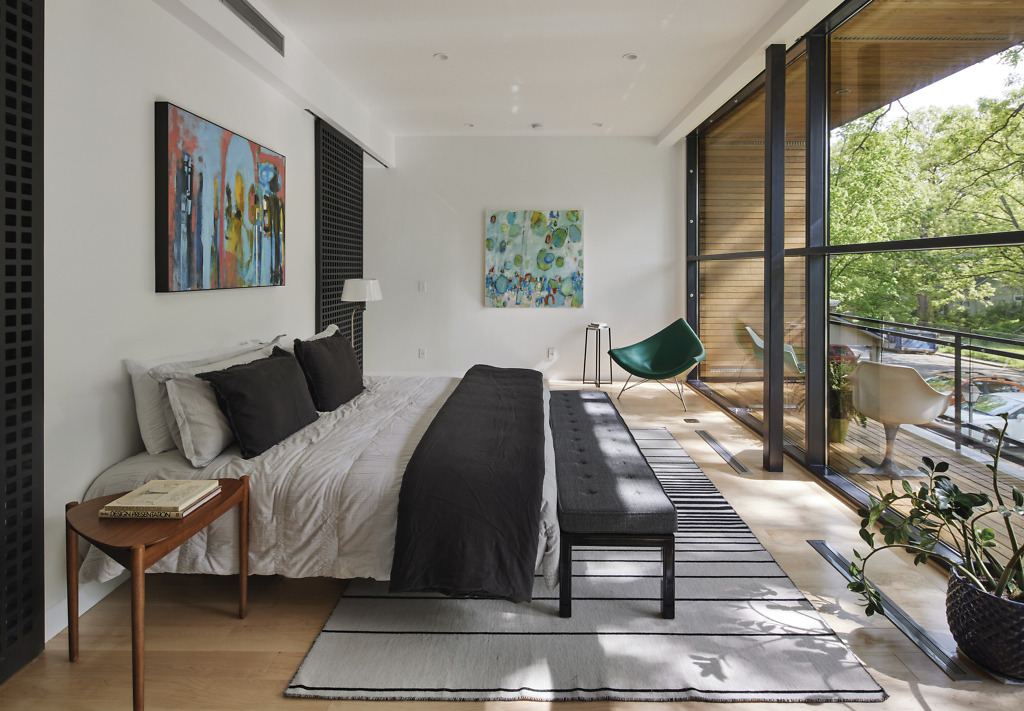
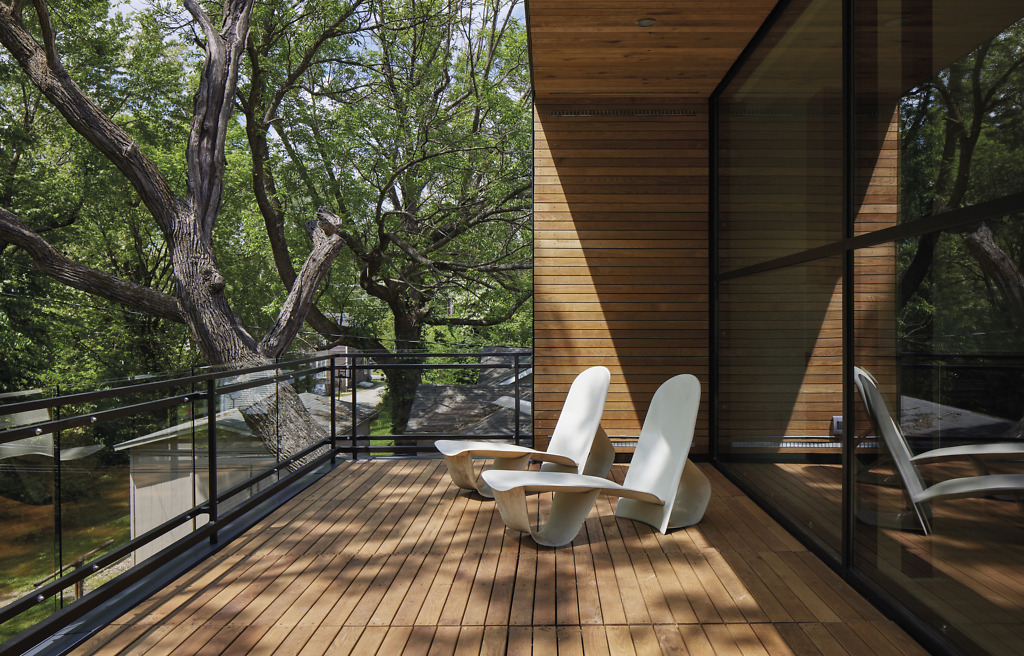
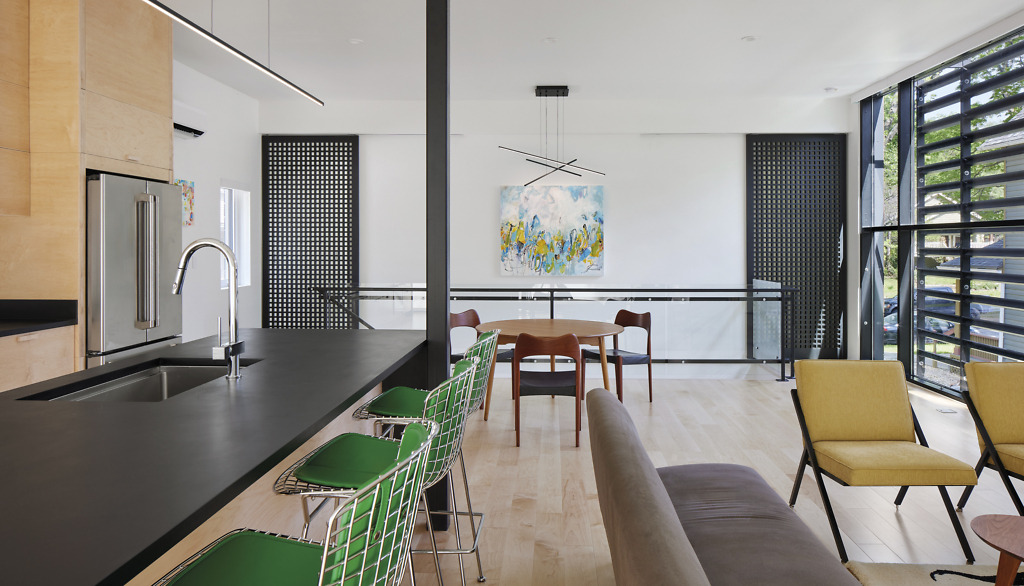
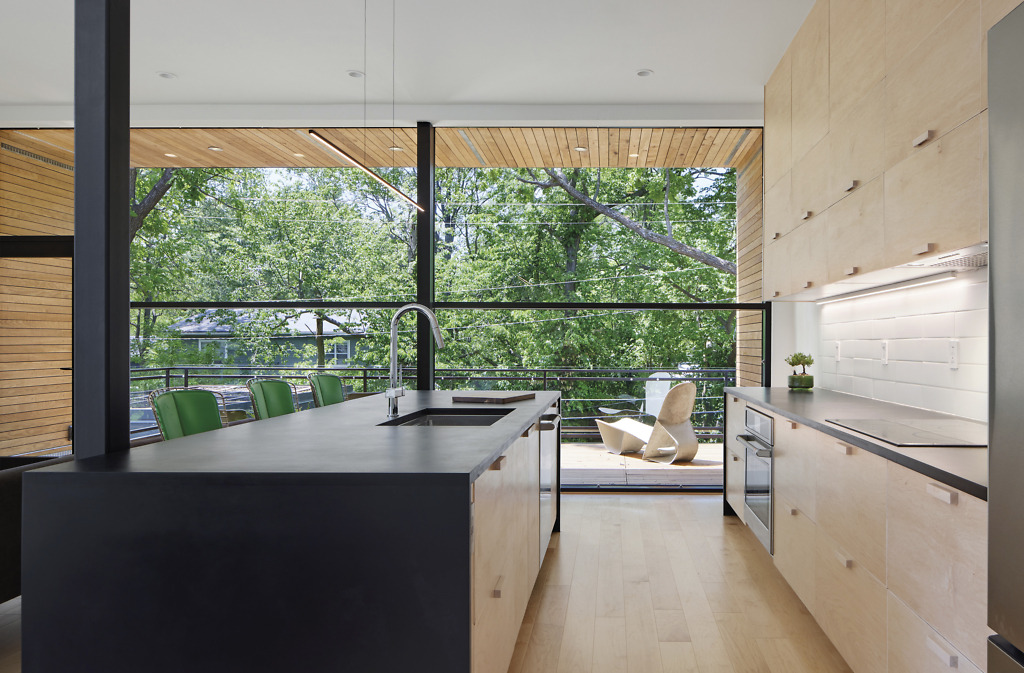
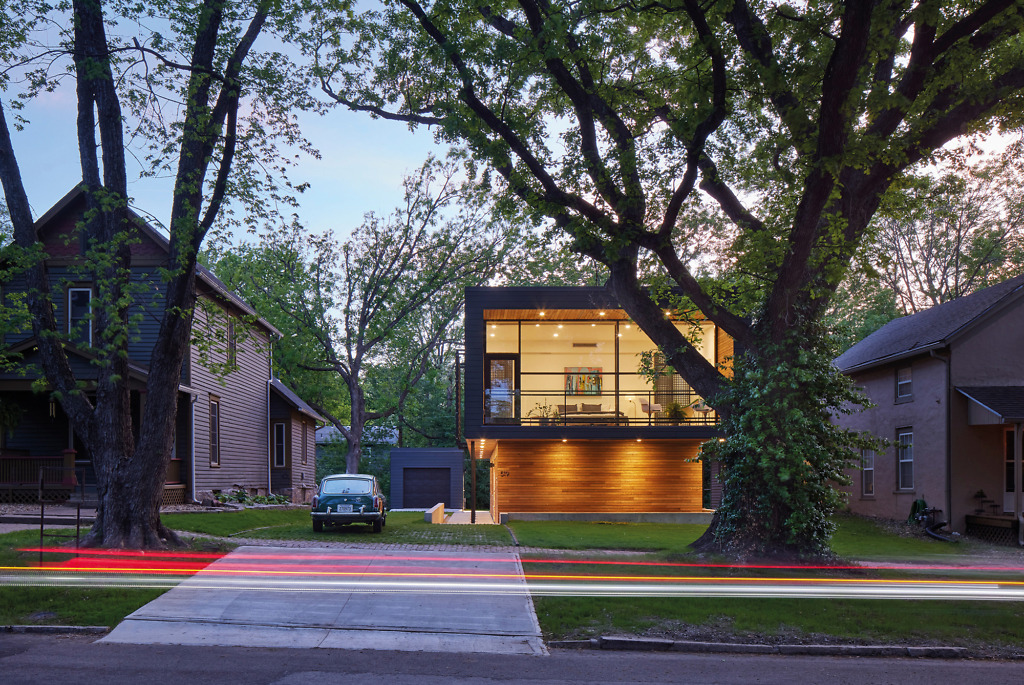
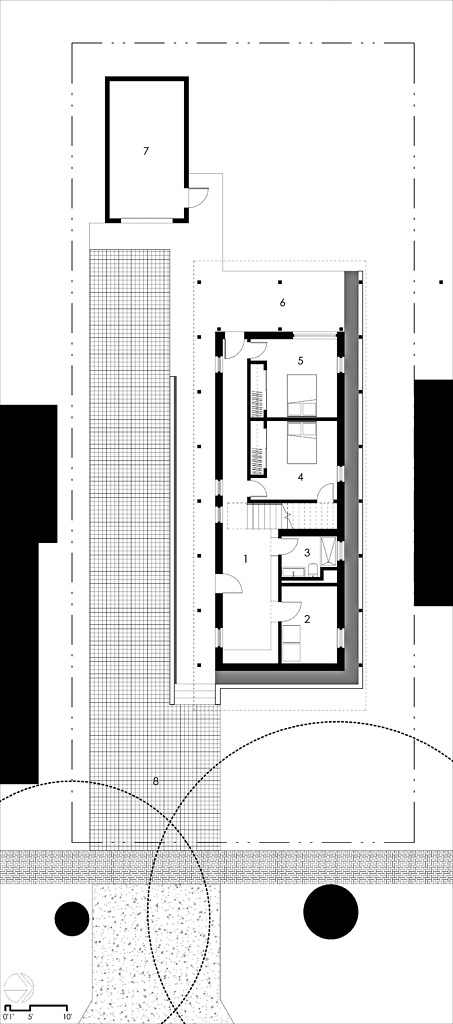
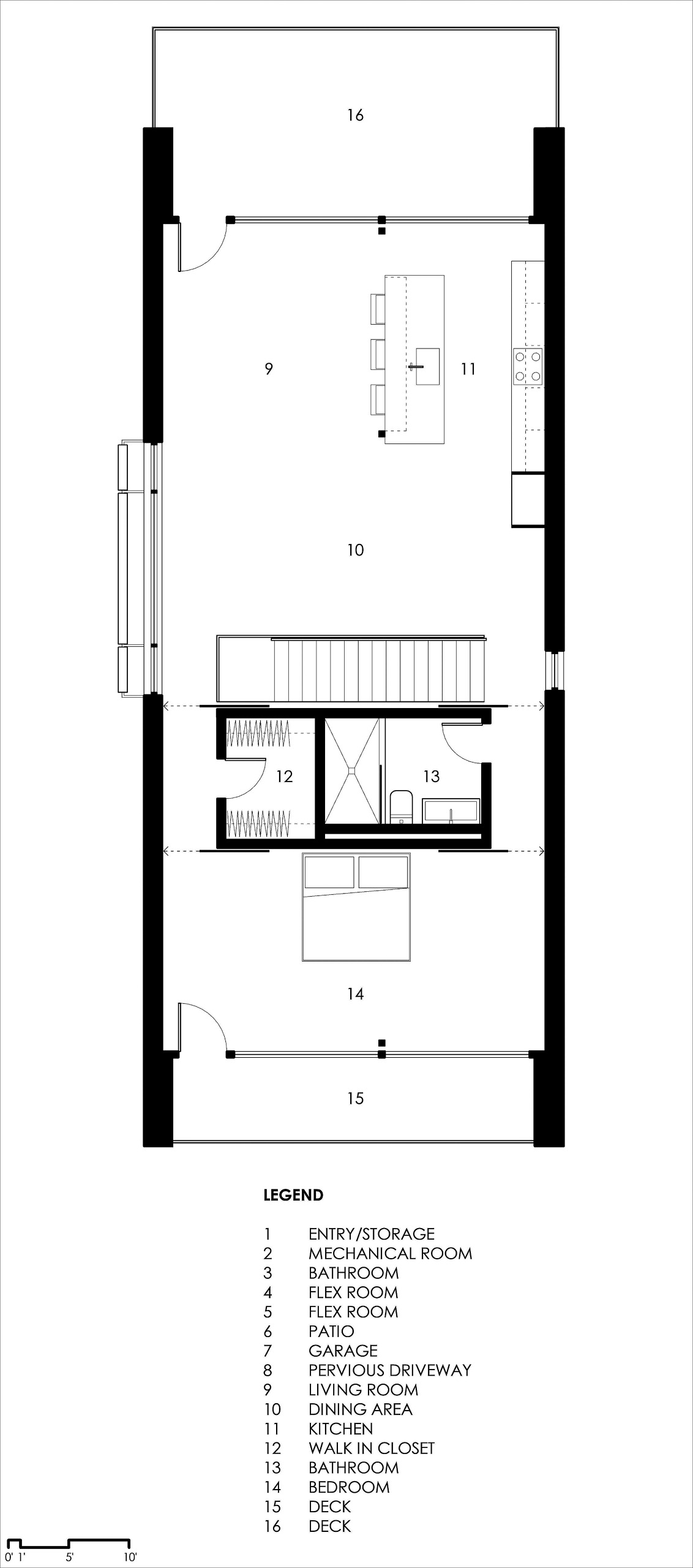
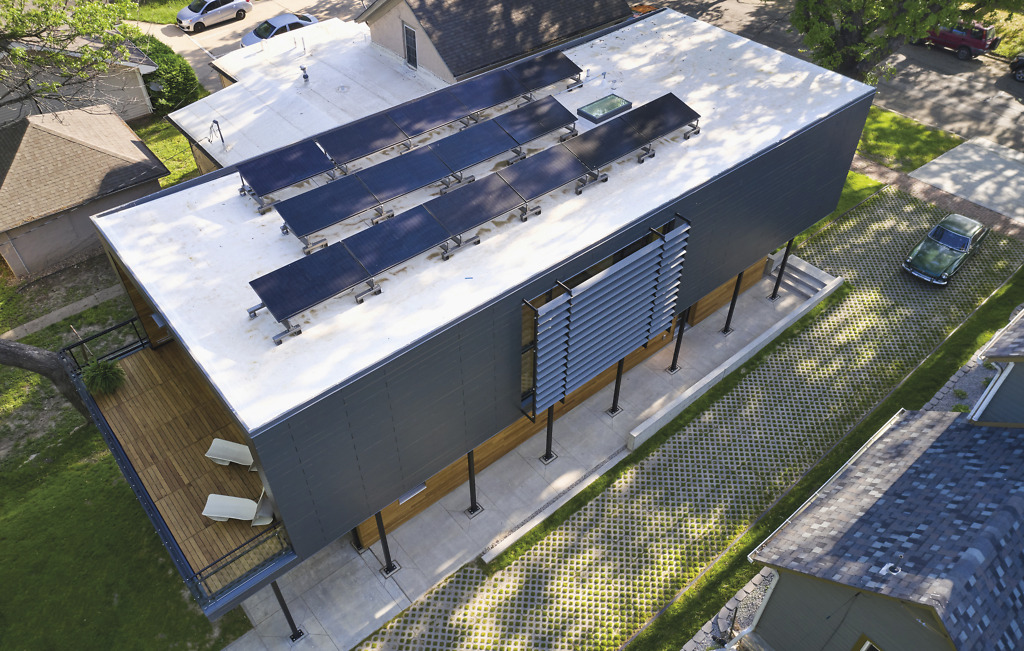
Sustainable Features
RENEWABLE ENERGY
The roof mounted solar array is comprised of fifteen high-wattage Q-cells, supporting a 6-kWh system. It will produce 9,377 kWh’s annually. This system is capable of offsetting 82% of the average Kansas home energy consumption. Through the local net metered system, the homeowner will be credited for the excess energy they create at any given time.
INSULATION/WALL ASSEMBLY
All exterior walls are insulated well beyond code with a final R-value of 41.45. The rainscreen siding system shades the insulated volume of the walls and ensures that the walls can properly dry during wet period and minimize the risk of mold.
AIR QUALITY
The HVAC systems includes an ERV, which exhausts warm stale interior air while using it to warm the incoming fresh air when needed. The house is equipped with three high efficiency Samsung Windfree wall units. A fan coil unit in the mechanical room serves both levels of the east side of the house.
RAIN GARDEN
To manage the stormwater runoff the site drains to the west into a rain garden. It collects and cleans the water and allows it to absorb back into the soil. The garden is also fed through a network of buried drains connected to the house’s downspouts. The rain garden’s plants are native to Kansas and provide habitat for pollinators and support migratory birds and insects.
DRIVEWAY
The grass pavers ensure the project meets the required ratio between permeable to impermeable surfaces and mitigate stormwater runoff. They are Turfstone pavers by Belgard and are made of concrete with voids between for grass to grow. Below the pavers is a subassembly of sand, compacted layers of aggregate, and a heavy geotextile fabric to control weeds and create a reservoir for the stormwater while it slowly absorbs into the subsurface soil.
GREEN ROOF
The garage roof is covered with a green roof of sedums to reduce the stormwater runoff from the impervious roofs.
THE CONCRETE
The project used nearly 85 yards of concrete. Approximately 20% of each yard is comprised of fly ash, a byproduct of the combustion of coal burning plants. Its use contributes to the reduction of greenhouse gases by reducing the amount of Portland cement used.
